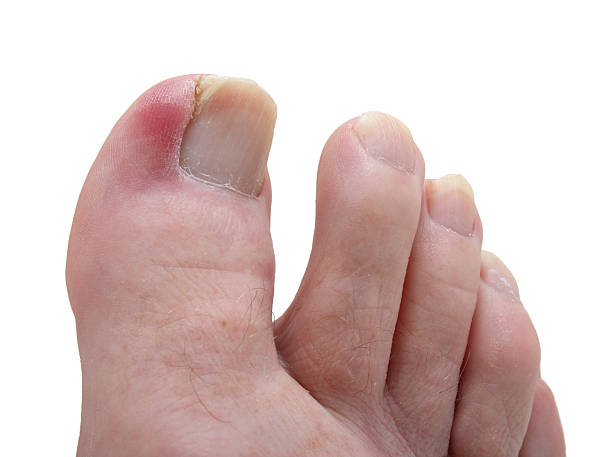Ingrown toenails may be excruciating. This frequent foot condition causes pain, swelling, and occasionally infection when the edge of a toenail grows into the surrounding skin. You don’t, however, need to visit a doctor right away. You can attempt several efficient at-home treatments to help ease the discomfort and restore normalcy to your toes. We’ll go over eight fast fixes in this post to assist you take care of an ingrown toenail and maintain beautiful feet.
What causes ingrown toenails?
Understanding what causes ingrown toenails may help you deal with the condition more successfully. Here are a few typical culprits:
- Improper nail trimming: Cutting toenails too short or rounding the edges might cause them to grow into the skin.
- Tight Shoes: Shoes with a small toe box might push toenails into the skin.
- Foot Injuries: Trauma or damage to the toenail can change its development direction and cause ingrowth.
- Genetics: Certain individuals have a higher risk of ingrown toenails owing to their inherent nail form and development pattern.
- Poor Nail Care: Improper foot hygiene and nail care might raise the risk of ingrown toenails.
8 Effective Home Remedies for Ingrown Toenails
Let’s look at some home treatments that can help you get relief from an ingrown toenail without the need for a doctor’s visit.
1. Soak your feet in warm water

Soaking your feet is one of the easiest and most effective methods for relieving pain and inflammation caused by an ingrown toenail. Warm water softens the nail and the surrounding skin, making it simpler to cure.
Instructions:
- Fill a basin with warm water and add a spoonful of Epsom or sea salt.
- Soak your feet for 15-20 minutes, 2-3 times daily.
- After bathing your feet, gently wipe them dry with a clean towel.
- For added relief, you can include a few drops of essential oils like tea tree or lavender in the water.
2. OTC Pain Relievers
When the discomfort from an ingrown toenail becomes unbearable, over-the-counter pain medicines might offer much-needed respite. Nonsteroidal anti-inflammatory medicines (NSAIDs), such as ibuprofen, can help relieve pain and swelling.
Instruction:
- Follow the dosing recommendations on the drug package.
- Take pain relievers as required to control symptoms.
Consult your healthcare professional if you have any concerns or pre-existing problems.
3. Use topical antibiotics

If your ingrown toenail is infected, using a topical antibiotic treatment will help avoid future complications and promote recovery. Look for treatments such as Neosporin, which are intended to treat mild skin infections.
How To Use:
Advertisement
- Wash the afflicted area with mild soap and water.
- Use a thin coating of antibiotic ointment on the ingrown toenail.
- Cover the area with a clean bandage or gauze.
- Reapply ointment 1-2 times daily, especially after bathing your feet.
CLICK NEXT BELOW TO CONTINUE READING

